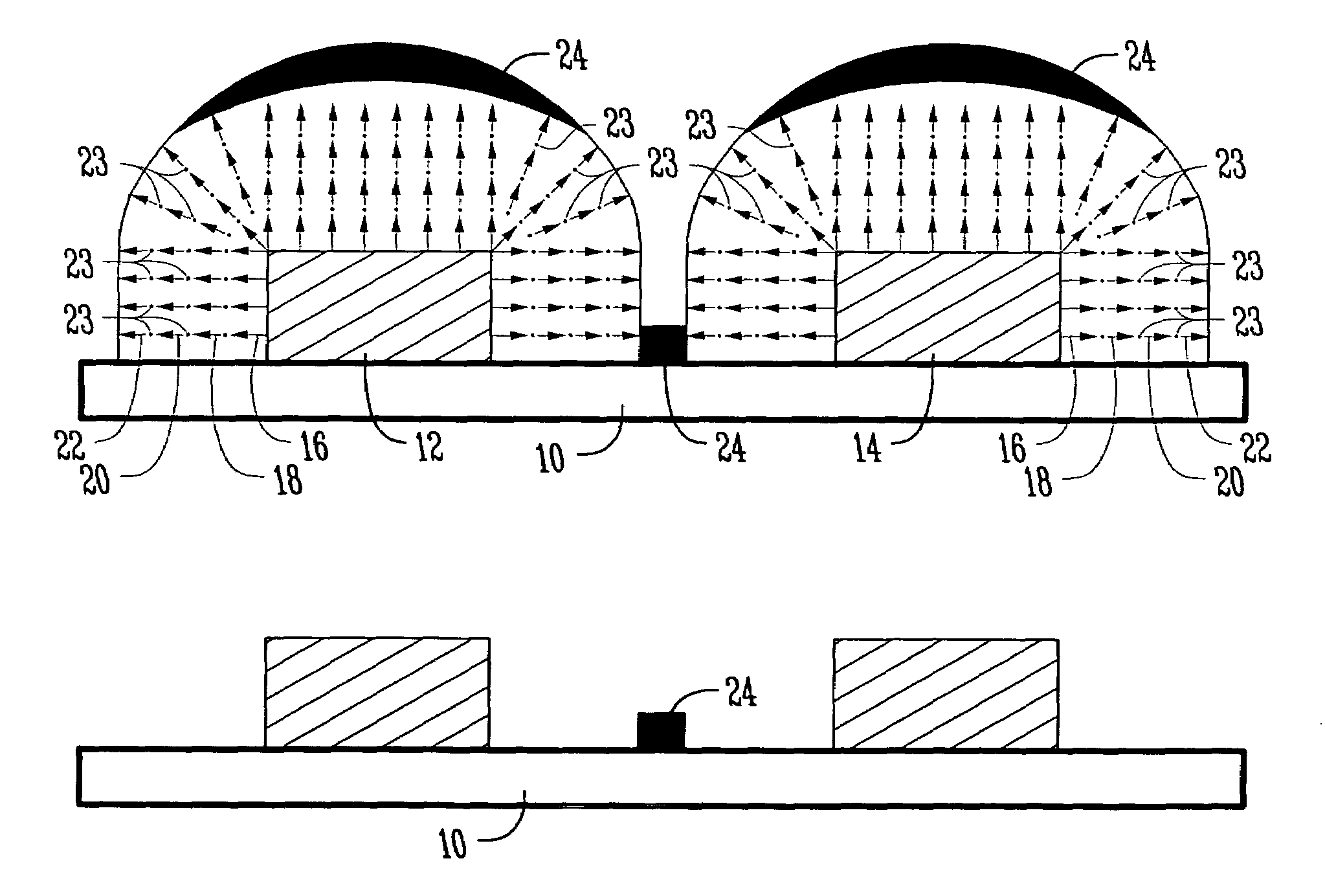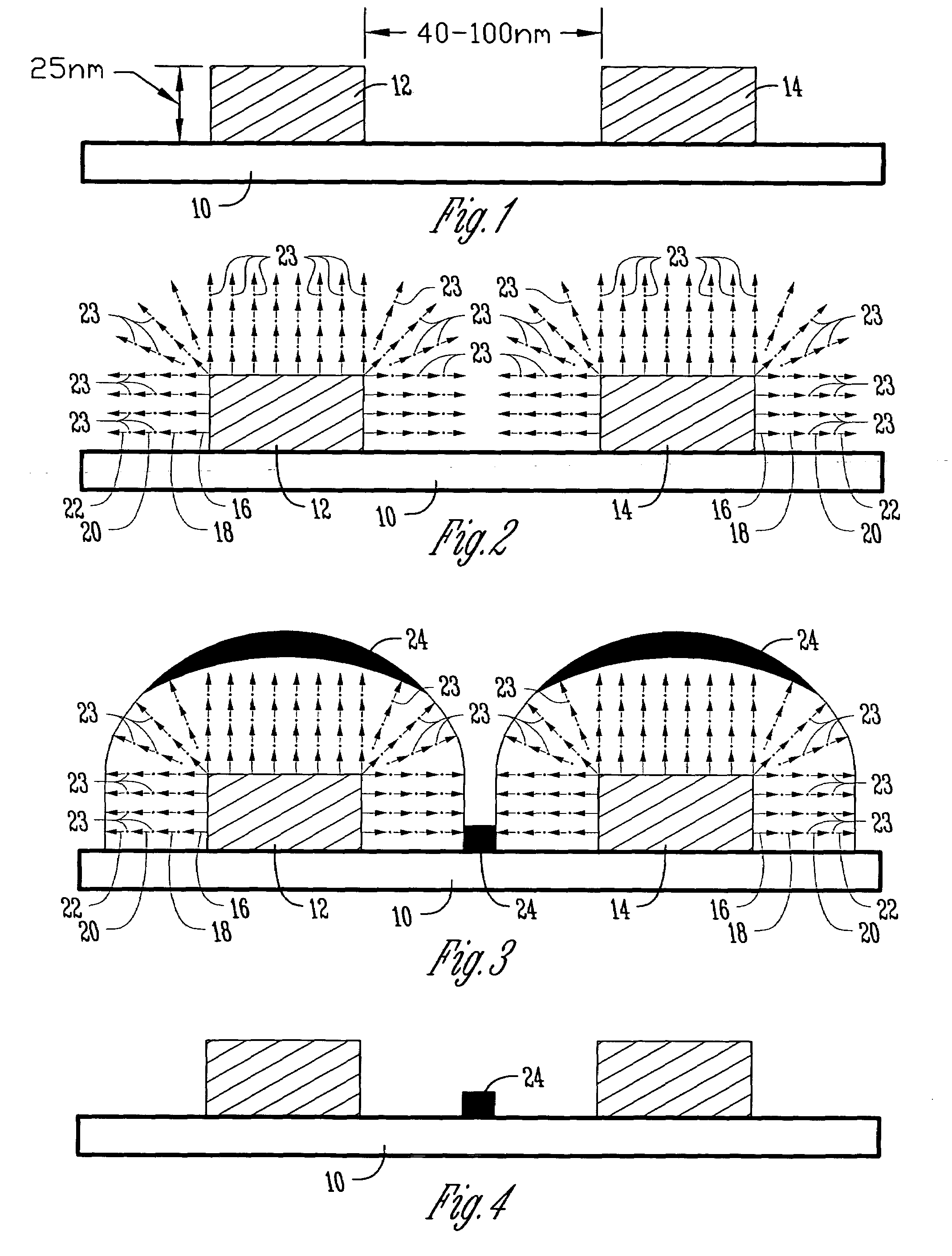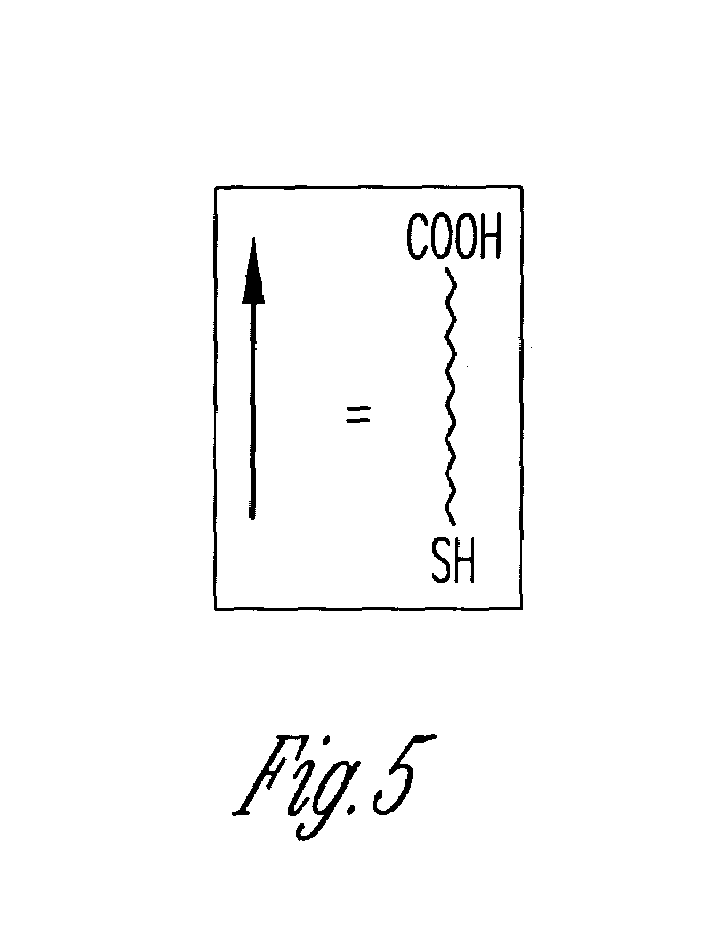Molecular ruler for scaling down nanostructures
a nanostructure and molecular ruler technology, applied in the field of nanofabrication, can solve the problems of inability to scale down nanostructures, inability to meet the requirements of nanostructures,
- Summary
- Abstract
- Description
- Claims
- Application Information
AI Technical Summary
Benefits of technology
Problems solved by technology
Method used
Image
Examples
Embodiment Construction
[0032]The present invention is a method providing for the scaling down of nanostructures and the resulting nanoscale electronic components.
[0033]In the present invention, a novel nanofabrication method is disclosed, based on controlled-size molecular resist. The method is suitable for the creation of electronic components containing nanostructures. The invention combines molecular science with lithographic processes to result in nanostructures that could be used in and / or to connect electronic components.
[0034]In FIG. 1, a substrate 10 is shown. The substrate may be a silicon substrate. Tests were conducted using a thermally oxidized highly polished doped Silicon substrate, Si(100). The present invention contemplates that other types of substrates may be used. The substrate is selected to ensure that essentially no multilayer resist adsorption occurs on the Si substrate.
[0035]A parent structure is deposited on the substrate. The parent structure of FIG. 1 includes trace 12 and trace...
PUM
 Login to View More
Login to View More Abstract
Description
Claims
Application Information
 Login to View More
Login to View More - R&D
- Intellectual Property
- Life Sciences
- Materials
- Tech Scout
- Unparalleled Data Quality
- Higher Quality Content
- 60% Fewer Hallucinations
Browse by: Latest US Patents, China's latest patents, Technical Efficacy Thesaurus, Application Domain, Technology Topic, Popular Technical Reports.
© 2025 PatSnap. All rights reserved.Legal|Privacy policy|Modern Slavery Act Transparency Statement|Sitemap|About US| Contact US: help@patsnap.com



